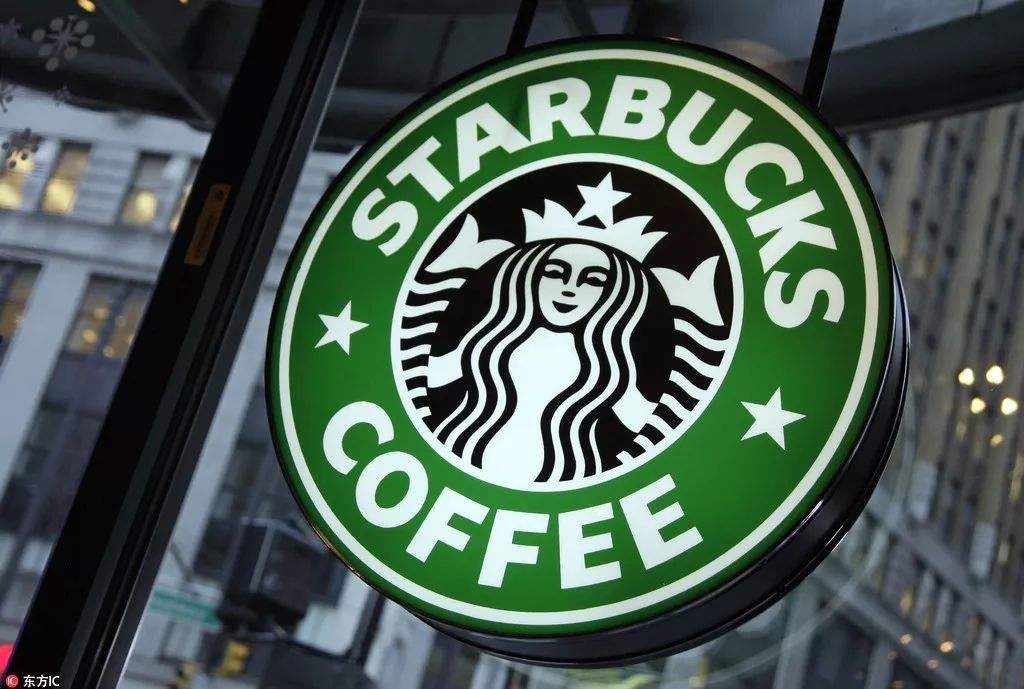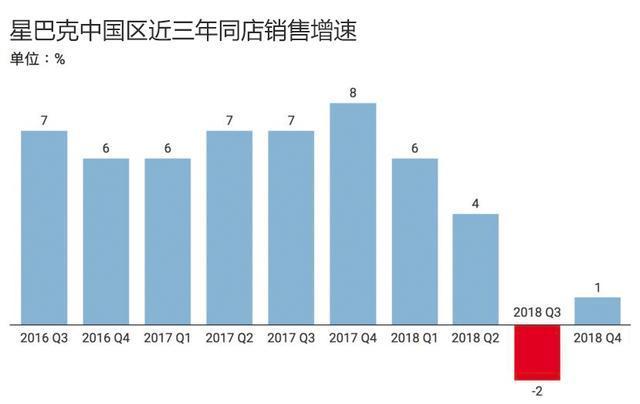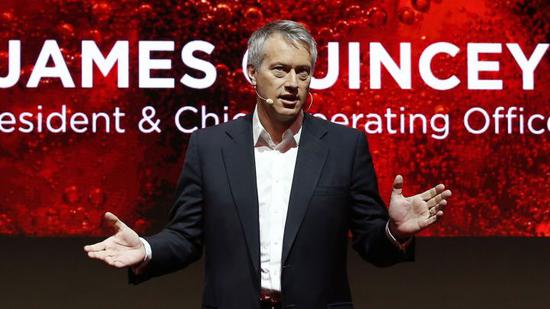Starbucks 2018's latest earnings report is bright, but the Chinese market is not improving.

Professional coffee knowledge exchange more coffee bean information please follow the coffee workshop (Wechat official account cafe_style)
Starbucks, the world's largest coffee chain, released its Q4 report for fiscal 2018 in the early morning of November 2, Beijing time. This is a financial report that looks "beautiful" at first glance, with several financial data such as net income, same-store sales and earnings per share improving, sweeping away the haze that has been criticized as the "worst in nine years" since the release of Q3. The good news sent Starbucks shares up in after-hours trading. However, after analyzing the core data of Starbucks in each quarter of the last three years, we find that Starbucks is still in crisis, and the market decline has not really stopped. The Chinese market, which is regarded as the "second home market", has become the deficiency of Starbucks global market.
A financial report that surprises the outside world.
Starbucks reported an 11% increase in 2018 Q4 revenue to $6.3 billion, surpassing expectations of $6.27 billion and an all-time high. Adjusted earnings per share (EPS) was 62 cents, up 13% from a year earlier. The 3 per cent increase in global same-store sales was mainly driven by a 4 per cent rise in average selling prices in the Americas and a 4 per cent increase in comparable same-store sales in the US. Same-store sales in China / Asia-Pacific region increased by 1%, and same-store sales in China increased by 1%. According to US GAAP, earnings per share were $0.56, up 4% from the same period last year; without GAAP, earnings per share were $0.62, up 13% from the same period last year.
There is clearly a big difference between the fourth quarter and the third quarter. Starbucks reported global net income of $6.3 billion in the third quarter of fiscal 2018, with global sales up 11 per cent and same-store sales up just 1 per cent. China / Asia-Pacific operating profit margin fell from 26.6% to 19%, down by 7.6 percentage points. Same-store sales in China fell 2% year-on-year. The report was also regarded by many investment bankers as the "worst in nine years".
Starbucks shares rose 8% after the Q4 earnings report. With the improvement of the financial data, the top management of the company naturally has a bright face. Kevin Johnson, CEO of Starbucks, is pleased to announce that this is the strongest performance of the US market in five quarters.

Is Starbucks out of trouble?
The answer to this question is to go back to the financial statements themselves. Moreover, special attention should be paid to the development trend of the Chinese market. At present, Starbucks has defined the Chinese market as the "second home market" except the United States, and its development determines the future trend of Starbucks financial data.
Are there any hidden worries in Starbucks Global, as well as Starbucks Asia Pacific and China?
1. There is no increase in the number of users / orders
Global comparable store sales rose 3 per cent year-on-year, driven by a 4 per cent rise in average selling prices in the Americas and a 4 per cent increase in comparable same-store sales in the US, according to the results.
This means that Starbucks' total number of users / orders worldwide has barely increased, or even declined. The 3% increase in Starbucks same-store sales is mainly due to a 4% increase in average selling prices. In addition, Starbucks opened 604 stores this quarter. Obviously, the new store diverts the passenger flow from the old one. This shows that Starbucks products have almost no temptation for some consumers.
Does the future growth depend on the increase in product prices? In the era of full competition in the coffee market, this is obviously impossible. With the continuous increase in the price of the company's products, some users will no longer "follow the brand" in the future and turn to choose other coffee brands with higher performance-to-price ratio. In the long run, the "double helix" model of Starbucks product price increase and same-store sales increase will one day collapse.
two。 The Chinese market is not improving.
Same-store sales in Starbucks Q4 China / Asia Pacific and the Chinese market both grew by 1%, compared with a 2% decline in the previous quarter, according to the results. Although there has been a reversal in Q4, we analyzed Starbucks' same-store sales indicators since Q3 in 2016 and found that Starbucks China has maintained a high growth rate of more than 6% since 2016 Q3, and even reached an ultra-rapid growth rate of 8% in some quarters. However, after entering 2018, this growth trend turned sharply. In 2018, Q1 fell from 8% of Q4 in 2017 to 6% of Q2. Q2 fell again to 4% of Q3 and even negative growth of 2%. This quarter, Starbucks' figure rose to 1%. Although it has made great progress from minus 2% to 1%, compared with the previous average growth rate of more than 6%, such a growth rate obviously does not dispel doubts about the future of Starbucks' Chinese market.
Moreover, compared with last year, the competition in China's coffee market has become increasingly fierce. According to foreign media reports, after Starbucks released its 2018 Q3 results, Sanford Bernstein, one of the world's top ten investment banks, released a report saying that Starbucks's decline in the third quarter would be sustained. Competitors such as Luckin Coffee are too strong and may become Starbucks' worst nightmare.
3. Profit margins in the Asia-Pacific region are still low.
Profit margin indicators also show that Starbucks is still at a low ebb.
In 2018 Q4, Starbucks' operating profit in China / Asia Pacific was US $232.2 million, with an operating margin of 19.1%, down 440bp from the same period last year. Starbucks explained that the decline was mainly affected by changes in ownership in eastern China. However, we note that Starbucks' operating margin in China / Asia Pacific was also 19% in Q3 in 2018, down 7.6% from a year earlier.
If the profit margin of 2018 Q3 is 19% as the "trough", Starbucks has gained 19.1% in Q4 again, which shows that Starbucks is still at a loss on how to improve its profit margin.
In the case of a 4% increase in the price of the product, the company's profit margin has not improved, which only means that Starbucks has fewer orders.

Can Chinese takeout save Starbucks?
Starbucks executives have clearly noticed that there is no increase in global users / orders, no improvement in same-store sales, and continued low profit margins in the Asia-Pacific region. After the Q3 results were released this year, Starbucks prescribed a prescription for plummeting operating data: closing 150 poorly run stores in the United States (up from 50 in the past); senior management adjustments (in effect, abolishment); and launching efforts in China. Starbucks has announced that the Chinese market will continue to expand at a rate of 600 new stores a year by 2022 and teamed up with ele.me to open a takeout service in September. Said Kevin Kevin Johnson, chief executive of Starbucks. "as we enter fiscal year 2019, we are implementing a clear growth plan with a focus on long-term growth markets such as the US and China."
As one of the three largest beverages in the world, the global coffee consumption market is more than 12 trillion yuan. According to the London International Coffee Organization, the size of the Chinese coffee market is growing at an annual rate of 15%, while the global market is growing at an average rate of 2%. In 2015, the sales volume of China's coffee market reached 70 billion yuan, and is expected to exceed 1 trillion in 2025. In terms of growth, China's coffee consumption is growing at an annual rate of about 15%, much higher than the 2% growth rate of the global market, so the Chinese market has also become a key market for coffee giants. In terms of specific coffee categories, according to a report released by consulting firm Mintel, the proportion of instant, instant and freshly ground coffee in the Chinese coffee market is about 7:2:1, while freshly ground coffee accounts for more than 87 per cent of total coffee consumption worldwide. According to the situation of developed countries, when the per capita GDP and consumption level increase, people's preference for coffee will change from instant solution to freshly ground coffee and pursue freshness. Some experts said that the proportion of instant, instant and freshly milled products in the Chinese market will be changed to 1:2:7 in the future. This also indicates that the development of ground coffee has a great future in the Chinese market.
At present, a number of coffee brands have seen this trend, including Australia's largest coffee brand Gloria Jeans, Canadian National Coffee Team hortons, Japanese National Coffee Doutor have entered the Chinese market, McCoffee and full-time coffee are also making efforts. At the same time, Internet coffee brands such as Luckin Coffee and Lian Coffee have developed at an astonishing speed this year, prizing the market with coffee takeout and becoming "the first cup of coffee for young people."
Coffee takeout is hot, and Starbucks is also following suit under the pressure of the market. In September, Starbucks launched takeout services in both the United States and China. In the Chinese market, Starbucks'"special star delivery" service launched jointly with ele.me has been extended to 11 major cities and is expected to be extended to more than 2000 stores in 30 cities across the country by the end of this year, covering more than 50 per cent.
However, the cost structure of Starbucks coffee has not changed. When people buy a cup of take-out coffee, they not only have to pay the same fee as placing an order in the store, but also pay a distribution fee of 9 yuan per order. The price of about 40 yuan per cup also makes a cup of Starbucks takeout coffee a "luxury" in the coffee industry, which obviously fails to attract the attention of young users. Chinese takeout can hardly save Starbucks when consumers don't buy it.
Moreover, the development rate of Internet coffee in the Chinese market is amazing, harvesting a large number of users. Luckin Coffee began trial operation in January this year, and the number of stores has exceeded 1400 and will reach 2000 by the end of this year. Luckin Coffee's new retail model has been initially verified, is in the stage of rapid replication, and the rate of store expansion next year will be even more amazing. If the current high-quality, cost-effective positioning can be continued, the number of users will also be in a period of rapid growth.
If we can not change the traditional business thinking and cost structure model, continue to adhere to high pricing, Starbucks bigger trouble lies ahead.
END
Important Notice :
前街咖啡 FrontStreet Coffee has moved to new addredd:
FrontStreet Coffee Address: 315,Donghua East Road,GuangZhou
Tel:020 38364473
- Prev

Coffee takeout competition is fierce, even coffee launched a coffee package aimed at the office group buying crowd
Professional coffee knowledge exchange more coffee bean information Please follow the coffee workshop (Wechat official account cafe_style) with Luckin Coffee's rapid expansion and the latest entry of strong chains such as Starbucks and McDonald's, even the influence of coffee is not as strong as it used to be, it must try to retain users. The coffee takeout market is becoming more and more crowded, and the former front-runner even coffee is trying not to be competitive.
- Next

Coca-Cola CEO: buying Costa Coffee is not to challenge Starbucks and Nestl é
Professional coffee knowledge exchange more coffee bean information follow Coffee Workshop (Wechat official account cafe_style) Coca-Cola President and CEO James Quincy (James Quincey) said in an interview that Coca-Cola's acquisition of the British coffee chain Costa for $5.1 billion is not so much a challenge to giants like Starbucks, no.
Related
- What documents do you need to go through to open a coffee shop? coffee shop coffee shop certificate processing process
- How to purchase Coffee beans in small Cafe how to choose a suitable supplier for domestic Coffee supply Company
- How to drink Starbucks Fragrance White Coffee? how to make Australian White Coffee? what Italian coffee beans are recommended?
- The Story of Flora Coffee: the name of Flora Coffee Bean and the implication of the Flowers on Florna Coffee
- How much does a cup of coffee cost? How much is the profit of a cup of coffee? What is the profit of the coffee shop in a year?
- Yunnan small Coffee, known as "fragrant Coffee", introduces the characteristics of Alpine Arabica Coffee producing areas in Yunnan, China
- 2023 latest Starbucks full menu price list how much is a cup of Starbucks coffee what is better to drink the most popular hot and cold drinks recommended
- Starbucks different kinds of Coffee Price list Starbucks menu 2023 Top Ten Best drinks in Starbucks
- Starbucks Spring praise Comprehensive matching Coffee Bean theme Story Packaging implication and taste description
- The cost of a cup of coffee latte American coffee cost price and selling price

